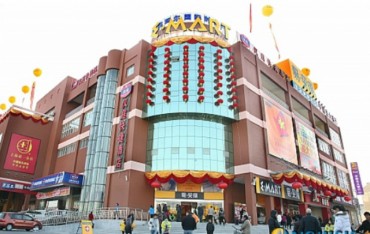
An international organization on water management technology has registered two South Korean reservoirs as world heritage irrigation structures, local governments said Wednesday. (Image: Yonhap)
SEOUL, Oct. 11 (Korea Bizwire) — An international organization on water management technology has registered two South Korean reservoirs as world heritage irrigation structures, local governments said Wednesday.
The non-governmental International Commission on Irrigation and Drainage (ICID) presented certificates on the registration of the Hapdeok Reservoir in the western coastal city of Dangjin and the Manseokgeo Reservoir in the city of Suwon just south of Seoul to the local governments at a world congress of the commission in Mexico City the previous day.
Recognition of world heritage irrigation structures by the New Delhi-based ICID, which has a membership of 96 countries, is aimed at protecting and managing reservoirs, dams, water ways and other irrigation facilities that contribute to the development of mankind and increase the production of food.
It marked the fourth time a South Korean facility was recognized as a heritage irrigation structure.
Seoho Lake, also known as Chukman Reservoir, in the city of Suwon, just south of Seoul, and Byeokgol Reservoir in Gimje, a city in South Korea’s southwest province of North Jeolla, are also on the list of ICID heritage irrigation structures.
Legend has it that King Gyeon Hwon, the founder of the ancient kingdom Hubaekje (892-935), had the Hapdeok Reservoir built to water his war horses ahead of a final battle against its rival Hukoguryo.
The reservoir covering an area of 240,000 square meters is designated as a natural monument in South Chungcheong Province to which Dangjin belongs. The Dangjin municipality plans to develop the reservoir as a tourist spot to experience the history of Korean agriculture.
The Manseokgeo Reservoir was constructed as one of three reservoirs against drought in 1799, when King Jeongjo, the 22nd monarch of the Joseon Dynasty (1392-1910), built the city’s Hwaseong Fortress, a UNESCO-designated cultural heritage site.
Established in 1950, the ICID is a leading scientific and technical NGO that has facilitated the sharing of experience and transfer of water management technology through its network of professionals spread throughout more than a hundred countries.
South Korea acceded to the international body in 1969, with the Korean National Committee on Irrigation and Drainage representing the country. The ICID made the scheme for the recognition of heritage irrigation in 2012 in a bid to trace the history of irrigation in civilizations around the world and collect information on historical irrigation structures worldwide.
A total of 51 irrigation facilities worldwide, including those in China, Japan, Sri Lanka, Pakistan and Thailand, have made the list of heritage irrigation structures so far.
(Yonhap)






